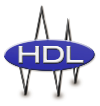All data loggers have internal clocks which are ‘activated’ when the logger is started in Tinytag Explorer. This article contains information on how time is set on your data logger, daylight savings changes and clock accuracy for Tinytag products.
Date and time
For data loggers that connect to a computer using a USB cable or pad, the time and date are set at the start of every logging run and taken from the clock of the PC on which the unit is started.
For Tinytag Connect products (Radio and LAN data loggers), the computer running the Master Connect Gateway sets the system’s time, and the loggers are automatically adjusted, as required, to keep them accurate.
If the time or date on the computer being used is set incorrectly, recorded data will show the wrong time or date, so it is important to ensure your PC clock is always set correctly.
Clock accuracy
The clock accuracy for Tinytag Talk 2, Ultra 2, Plus 2, View 2 and CO2 data loggers at 25°C is ~20ppm (which equates to a maximum drift of ±1.73s/day).
At other temperatures, the clock accuracy is as follows:
-10 to +60 deg C: ±50ppm (±4.32s/day)
-30 to +80 deg C: ±130ppm (±11.232s/day)
Time zone
Data loggers that connect to a computer using a USB cable or pad are unaware of the time zone in which they were launched. For example, data from a logger launched at 18:00 in London will show a start time 18:00 when viewed in New York.
Daylight savings changes
The times displayed by Tinytag Explorer are calculated when the data is displayed and depend on the PC’s daylight saving settings at that time.
For example, if a .ttd file is opened before and after DST settings change, then Tinytag Explorer will display all times forward or backward.
The advantage of this approach is that the relative time information is always correct. For example if a logger is set to record once every 24 hours and is left running during a DST transition all the timestamps will be 24 hours apart.
Unfortunately, this approach means historic data may appear wrong if DST has changed since the data was recorded. For example, a .ttd file from a logger that records every 18:00 GMT in the winter will display 18:00 when viewed in the winter but 17:00 when viewed during the summer.
Please note: describing how the data is displayed by Tinytag Explorer on PC’s in countries that apply different DST rules to those where the logger was launched is beyond the scope of this article. Please contact us if you require an explanation of this.




